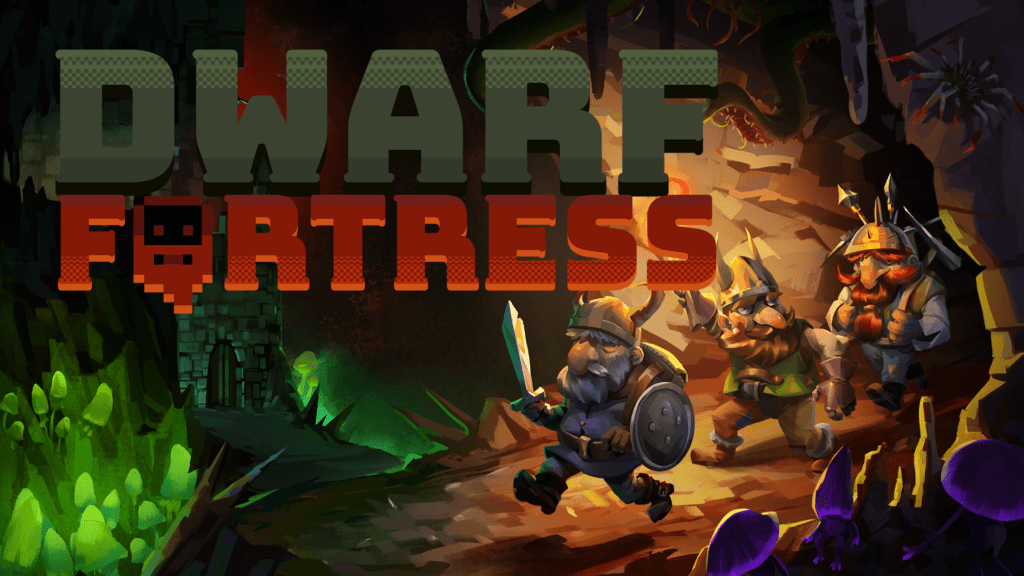
How do you even review a game like Dwarf Fortress from developer Bay 12 Games and publisher Kitfox Games? Seriously, this is one of the most difficult reviews of all time. It’s not due to any of the normal reasons either. It runs great on a PC. The pixel art looks nice. Everything about the game is neat. But it’s the history. This is a game that’s been in live, playable development for almost TWENTY years! People have been playing it since 2006 in one form or another and it’s hard to step in as a new player and give your thoughts on the game without all the associated background that goes along with it.

And there’s plenty of chances to get things wrong here. Dwarf Fortress is unlike any other game on the market and it’s legitimately even a bit hard to explain. The game started out as an text-based ASCII game with ASCII symbols used for visuals. For those of you who aren’t familiar with that sort of thing, we’re talking ‘80s style computer gaming. It’s still around, hiding in the back corners of the internet watching people being eaten by a Grue. Unless you stumble upon it though, most modern gamers don’t give old-school PC gaming a second thought.
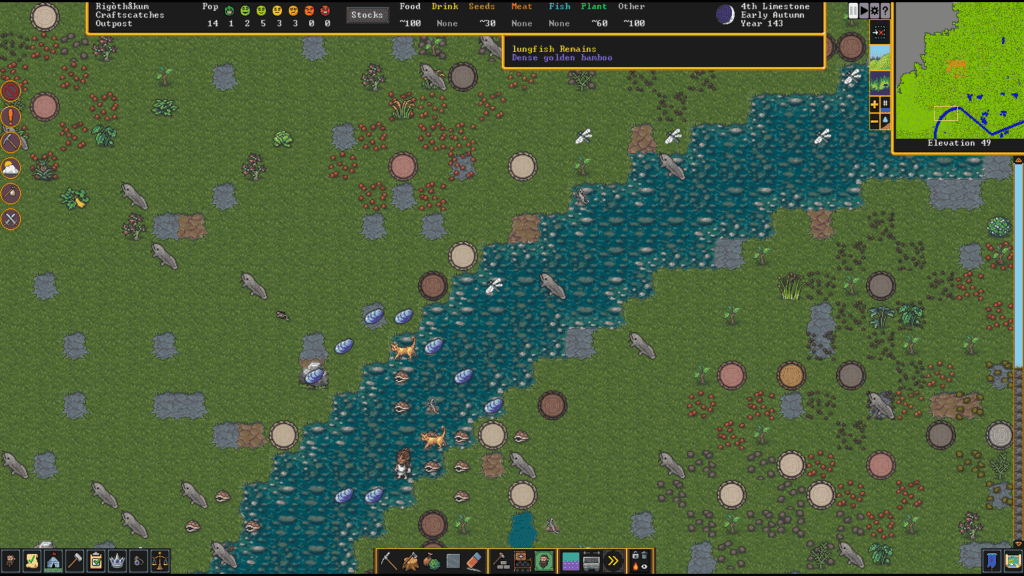
But this is a whole different ballgame. What’s really unique about Dwarf Fortress is that it’s a game with no set purpose. Sure, you build a fortress and survive, but there’s really nothing to accomplish. There’s no plot. No expectations. No pressure other than survival. It’s just there, lower-key than Minecraft with a legion of hardcore fans that have spent half their lives or more with the game. So what do you do? You build a fortress.
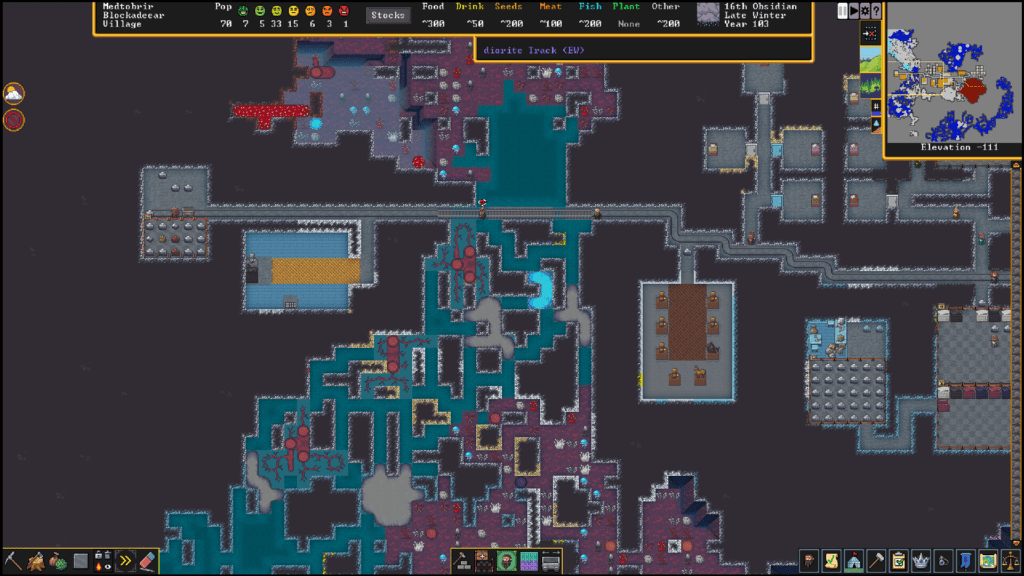
The main point of Dwarf Fortress is to just see what can happen in a world where nearly anything goes. Want to dig down and mine, create a giant dwarven society and a burgeoning trade empire? You can do that. Want to hunt zombies? You can do that too. Feel like marrying and having kids and seeing how the generations play out? Doable. Exploring the continent? Sure. Fighting and slaughtering neighboring tribes of dwarves? That’s there too…and they’ll probably come for you if you don’t come for them! Things get a lot crazier too. There are monsters. Ghosts. Ridiculous amounts of backstory for every conceivable reason squirreled away in quintuple sub-menus. My dwarves have wives, children, lovers on the side, and a whole lot more going on. That’s just the beginning.

So I started playing Dwarf Fortress and I built some things. And nothing happened. Then I built some more things…and a kitchen because…food. Not much happened. Then my people had tiny red angry faces for some reason. I don’t know why. I couldn’t figure out what was happening, so I kept building. Slowly people got happier. I started to learn what a few menu options could do. Turns out some of them don’t like the rain so I assigned them work underground.
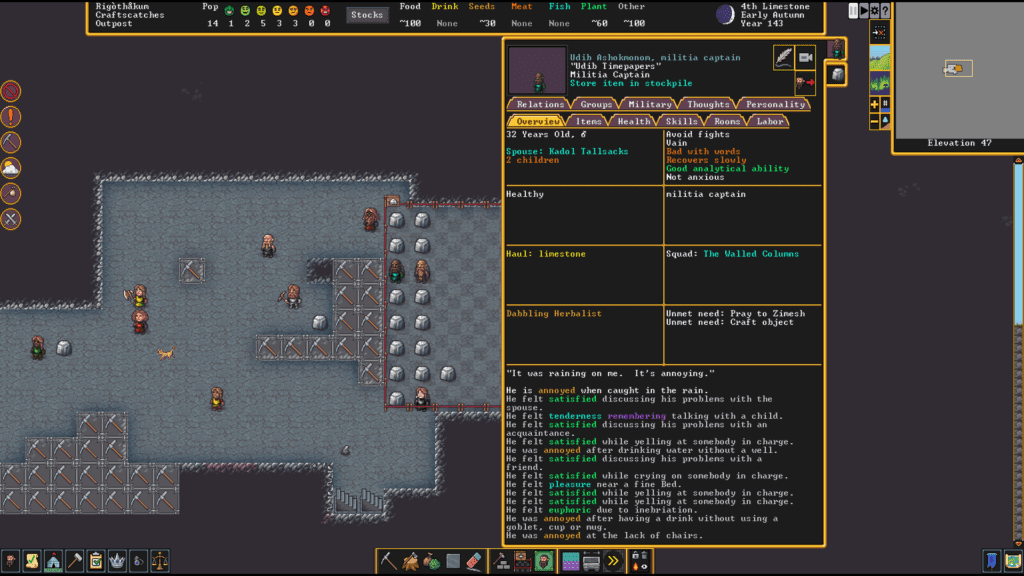
What’s incredibly insane about Dwarf Fortress is that nearly every conceivable idea has already been not only thought of but implemented. So you’re building, a few people get angry because things don’t go their way and suddenly they’re on a murderous rampage, slaughtering their fellow villagers. Or you didn’t bother to assign a military commander and make squads so the very first hostile creature that discovers your camp slaughters everyone leaving your town abandoned. Any of it and a whole lot more can happen at any time. And this is a game that can legitimately strain the resources of your PC due to the sheer number of calculations required. There’s a soft cap of 200 dwarves for example but if you dig into the settings menu the hard cap is 5000. FIVE THOUSAND PLAYABLE CHARACTERS. Think about that. Assign them jobs, give them managers (yeah, you need managers…badly). Watch your computer melt into the floor. Oh…and 5000 potential visitors. Not just dwarves, but elves, humans and more. And oh yeah, a solid 2500 hostile creatures per world. Good luck fighting that horde off. You’re going to spend your first 5-10 hours in Dwarf Fortress literally getting a feel for the game’s menu system and scratching the surface of its complexity. Then you’re going to die. All your dwarves will perish somehow in some terrible accident or a vicious attack because there’s no tutorial system and you had no idea you needed a functional defensive perimeter.
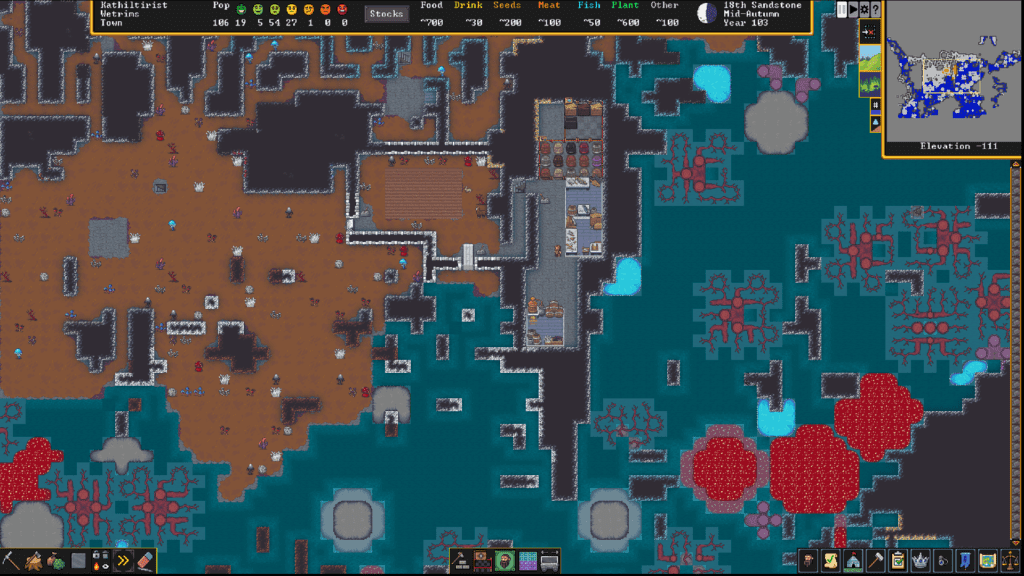
Dwarf Fortress has no tutorial. Ok, sure the newly skinned Steam-friendly version has a semblance of one but it gives you so little information that you legitimately have no idea what the iconography even means. You don’t know that dogs can be trained as weapons of war for example, or that married couples have a shared bed once you assign it, limiting the number of resources you need for the dwarf hotel you’ll definitely have to build. It’s so overwhelming that it’s almost impossible to know where to start. But Dwarf Fortress players have seen some things. And there are tutorials all over the net giving guidance. There are chat rooms and forums and fans all over the place. People have been playing for over a decade and are still learning entirely new things about the game. Like I said at the beginning, impossible to review.
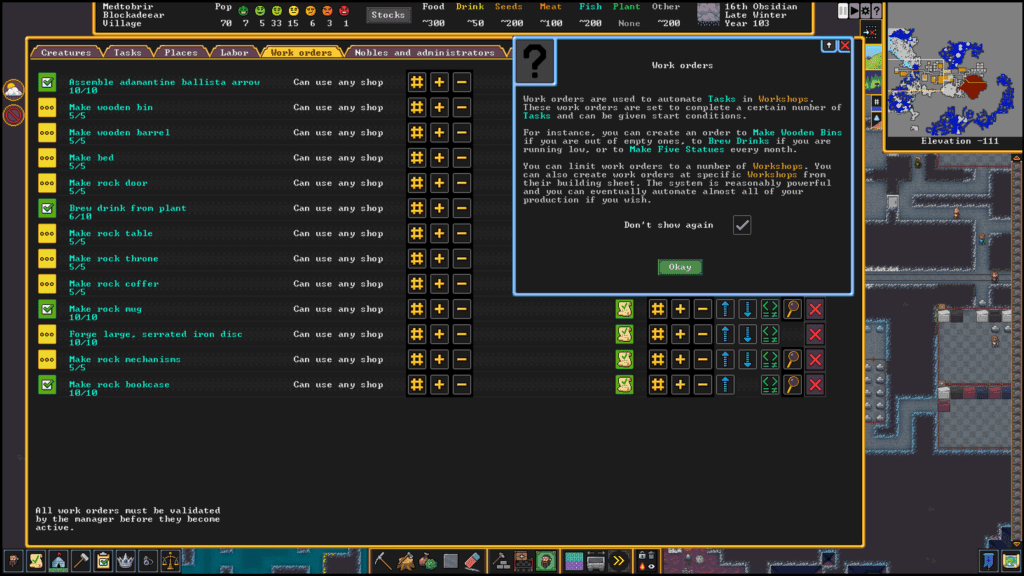
Let’s talk about the UI for Dwarf Fortress for a moment. Most players are more than used to the ASCII version of the game with hotkeys and keyboard commands. It’s a hell of a lot for newbies to learn but it makes sense. There’s a command for pretty much everything and if you really want, this new Steam version of Dwarf Fortress can even swap to classic mode. But for those of you with limited time, the new mouse-enabled UI is likely to be where you’ll go.
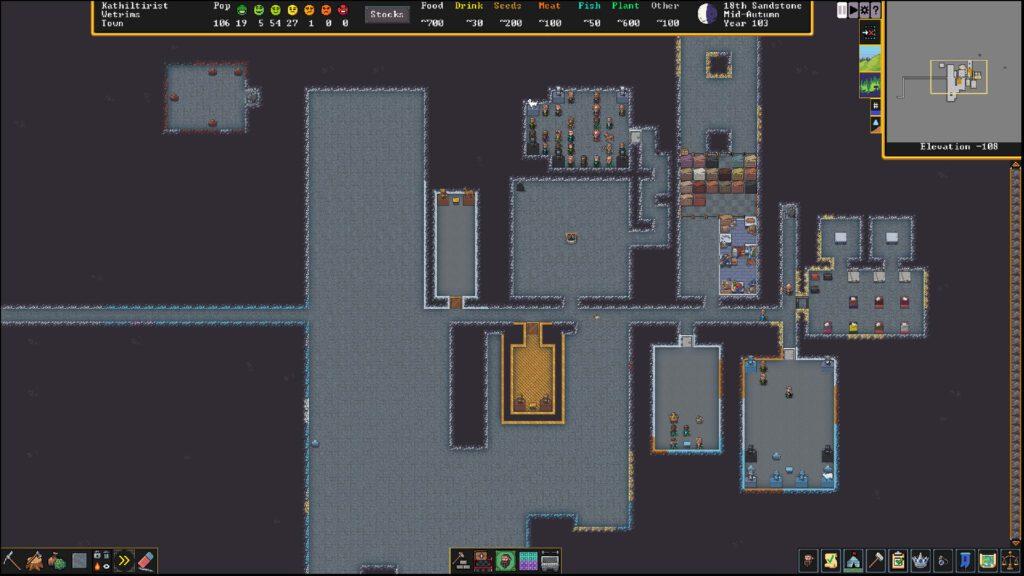
Unfortunately that UI is so incredibly complex that there’s almost no way to learn it. In the time it takes to play enough of Dwarf Fortress to have anything to say about it at all (and that’s no short amount of time), I learned how to dig, build walls, make furniture, assign military commanders, and a handful of other basic tasks. Learning how to assign managers to automate necessary tasks took some time too. Nothing tells you whether you are right or wrong, which menu does what, and what to do next. There’s zero direction and it’s fair to say that this is legitimately the most complex game ever made. In other words, the menu system has a learning curve so steep it puts Mount Everest to shame and that’s just the beginning.
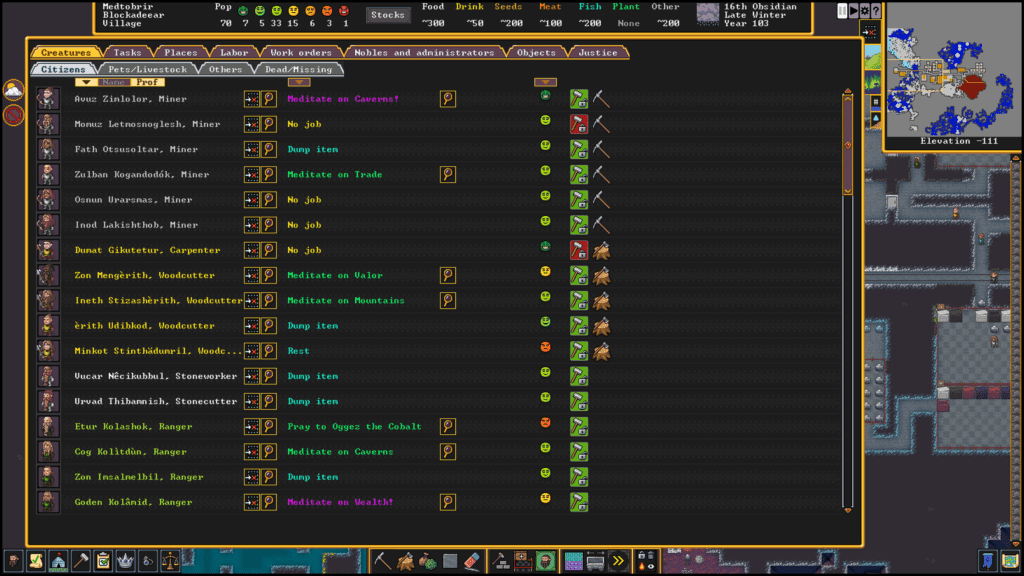
Once you inevitably sink a bunch of hours into Dwarf Fortress because you really want to see what happens and your society crumbles in one of a myriad of ways, it’s time to move on and start a new one using the knowledge of your previous doomed dwarves. What’s wild about Dwarf Fortress is that you can build it in the same world and your old town, or the remnants of it, still exist. Manuscripts and notes and information refer to it. It becomes part of the larger history of the world and you build upon the ashes like Italy building upon the Roman empire. Each successive iteration adds more depth and you can even look at the thoughts of different villagers, their lives, their relationships, their backstories, religions, addictions and more. The endless variety and complexity is hard to even process.
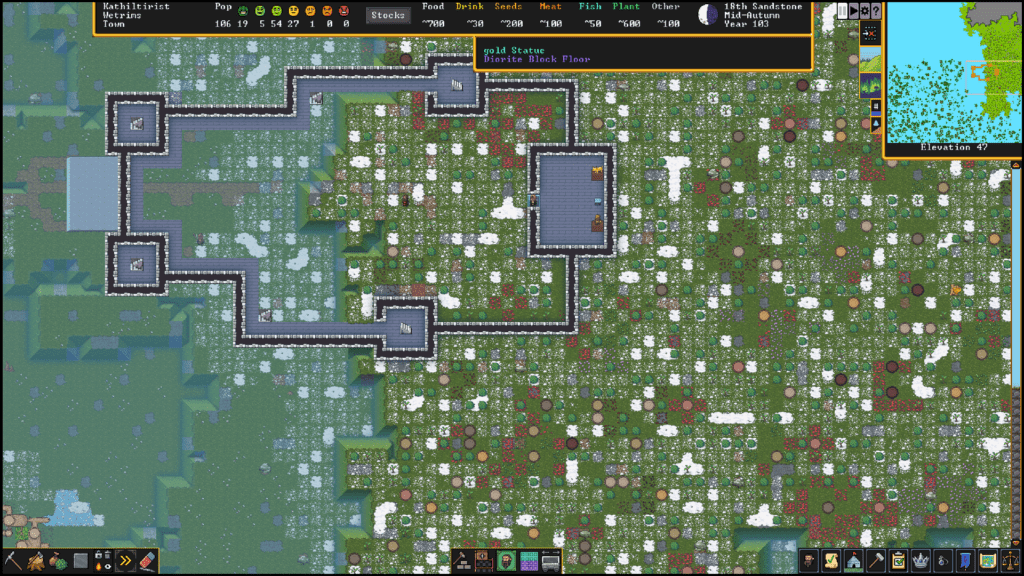
What we haven’t looked at so far though is the new graphics. Dwarf Fortress looks pretty, especially compared to the previous version of the game which was all a bunch of squiggly symbols and text. It’s not fancy but even the new visual modes have a ridiculous amount of detail. If you use different types of wood to make furniture for example, the furniture looks different. You know, like real wood. That goes for every single character and item in the game. There are unique palettes for every item based on how it is built with each material and every character has a plethora of variable options. No two are alike! Add to that the multiple depth planes, the world maps, and the creatures and you’ve got a lot going on.
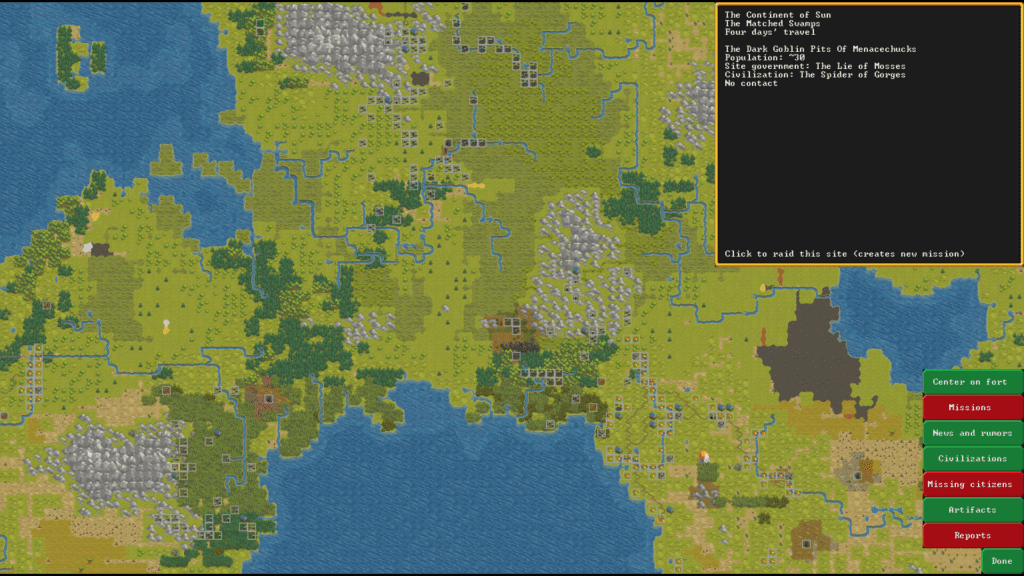
The music is relatively chill in this version of the game too. It’s good, but like the rest of the game, it feels like a work in progress. Tracks play and then go silent. They’re good stuff, quiet folk music harp ballads and the like, but that’s not really why you’re here. You’re here for the menu management and the wild, wild stuff that will eventually go down. Eventually. Hey dwarves live a long time, so they can be patient. You should be too.

Again, it’s important to remember that it is almost impossible to actually review Dwarf Fortress because there’s just too much to it. If you don’t want to spend literal years of your life learning the ins and outs of an obscure game, this might not be the title for you. If you’re fascinated by the stories that Dwarf Fortress generates almost as an afterthought, take a closer look. While this is a management simulation, the things that can happen are so incredibly unpredictable that you just want to keep checking back. Flooding, cave-ins, plagues, insurrections, it’s all worked in. But you need to be ready for it.
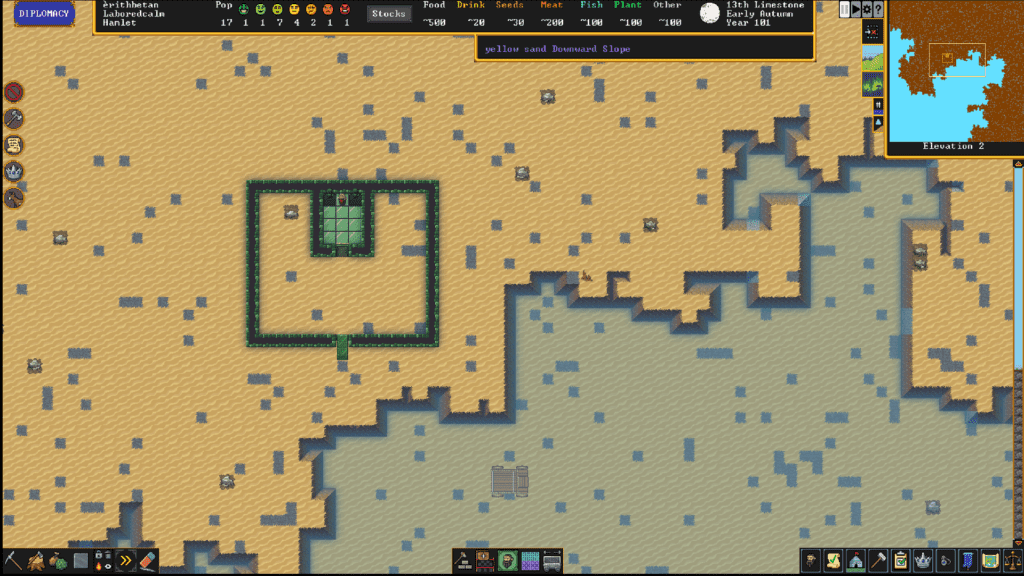
If you’ve never used a gaming wiki before, now is the time. The Dwarf Fortress Wikipedia page is like the world’s largest strategy guide. Imagine a group-generated tutorial years in the making where the quick start mechanics introduction is 10 pages of dense text long and includes flow charts. There’s planning for waste disposal, basic sleeping arrangements and strategy, farming, meetings, and food preparations. That’s before you unpause the game for the FIRST time. Eventually you’ll be channelling water and lava to run complex forging processes. Welcome to Dwarf Fortress.
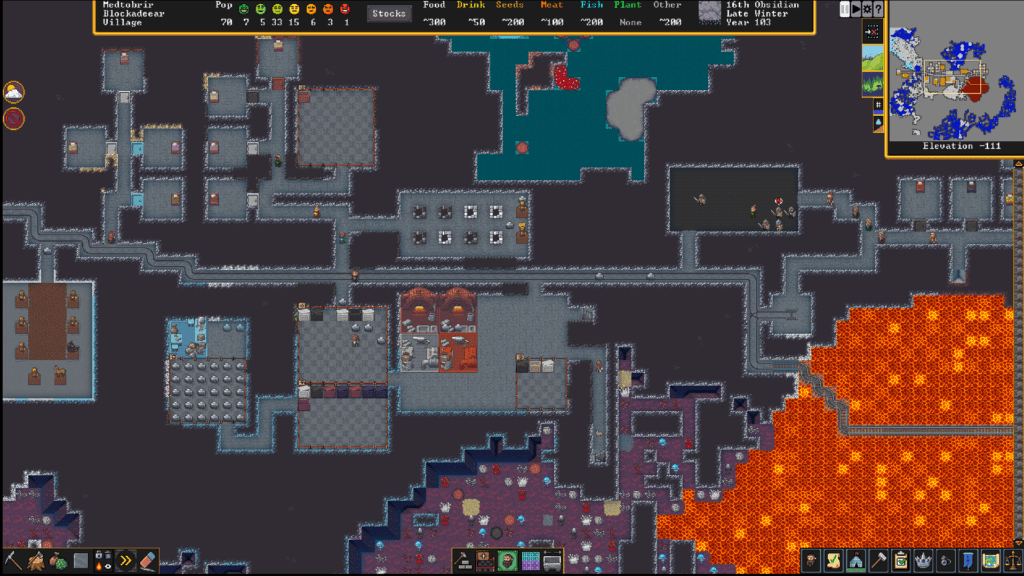
If you feel like you have no idea what the game is about by now, you’re not alone. Having spent some time with it, I feel almost as lost as when I started and I still really have no idea what I’m doing. But I want to see what can happen damn it and those little quotes and thoughts from my dwarves have me curious. What is going to attack me next? Will I survive? Did I learn enough to make my next fortress sustainable? Probably not but that’s the magic here. You can do anything, create any type of society you want and just give it a go. Sure, this is a game for extreme resource management geeks and hardcore simulation fans, but it’s so far beyond anything else in the gaming world that good and bad don’t even apply here. There is no good. There is no bad. There is only Dwarf Fortress.

This review is based on a digital copy of Dwarf Fortress provided by the publisher. It was played on a gaming PC with a 1080Ti graphics card. This version of Dwarf Fortress is exclusive to Steam.

